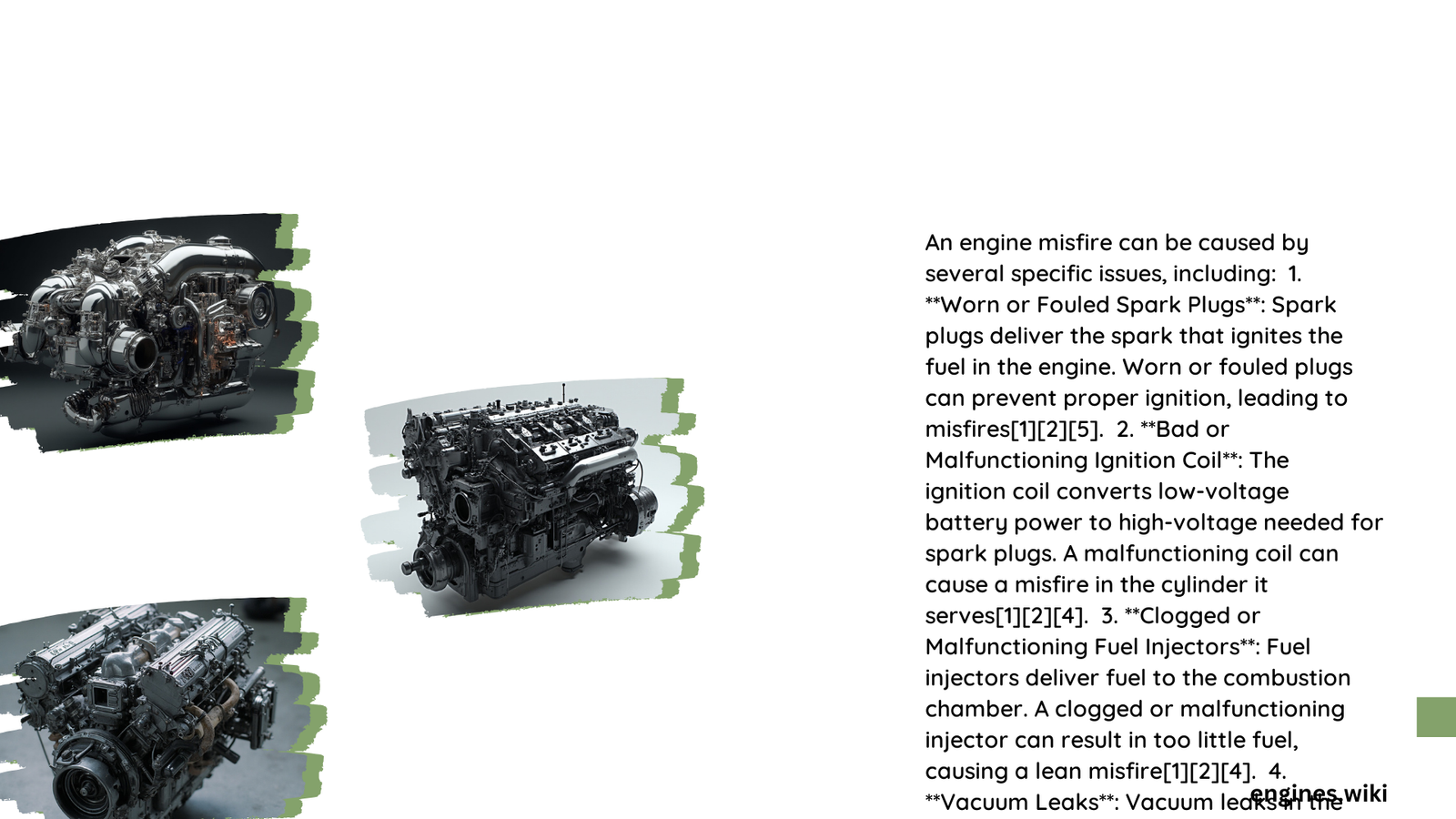Engine misfires represent a complex mechanical issue that can stem from multiple interconnected systems. When an engine experiences a misfire, it means one or more cylinders fail to produce proper combustion, leading to reduced performance, increased emissions, and potential long-term damage to critical engine components. Understanding the precise mechanisms behind misfires requires a systematic approach to diagnosing potential root causes across electrical, fuel, and mechanical systems.
What Causes Spark Plug Failures?
How Do Spark Plug Gaps Impact Engine Performance?
Spark plug gaps play a crucial role in engine combustion efficiency. Improper gap measurements can dramatically affect engine performance:
| Gap Size | Performance Impact |
|---|---|
| Too Narrow | Weak spark, incomplete combustion |
| Too Wide | Inconsistent spark, potential misfires |
| Manufacturer Specification | Optimal engine performance |
Key factors influencing spark plug performance include:
– Electrode wear
– Carbon and oil fouling
– Material degradation
– Electrical resistance changes
What Electrical Characteristics Indicate Spark Plug Failure?
Spark plugs demonstrate specific electrical characteristics that signal potential failure:
– Resistance measurements outside manufacturer specifications
– Inconsistent spark voltage
– Visible electrode erosion
– Abnormal color or deposit accumulation
How Do Fuel Injector Problems Trigger Misfires?

What Flow Rate Issues Cause Combustion Problems?
Fuel injectors must maintain precise flow rates to ensure proper combustion:
– Clogged injectors reduce fuel delivery
– Inconsistent spray patterns disrupt fuel-air mixture
– Electrical resistance variations indicate potential failure
Can Injector Cleaning Resolve Misfire Issues?
Cleaning techniques for fuel injectors include:
1. Ultrasonic cleaning
2. Chemical solution treatments
3. Professional diagnostic testing
4. Replacement of severely damaged components
What Vacuum Leak Symptoms Indicate Potential Misfires?
How Do Vacuum Leaks Disrupt Engine Performance?
Vacuum leaks can cause significant engine performance issues:
– Disrupted air-fuel ratio
– Inconsistent combustion
– Reduced engine efficiency
– Potential check engine light activation
Detection methods:
– Smoke testing
– Vacuum gauge measurements
– Advanced diagnostic scanning
What Ignition Coil Failures Contribute to Misfires?
How Do Ignition Coil Measurements Reveal Performance Issues?
Critical ignition coil parameters include:
– Primary resistance (0.5 to 3 ohms)
– Secondary resistance (5,000 to 15,000 ohms)
– Voltage output range
– Consistent electrical performance
What Diagnostic Techniques Identify Coil Problems?
Recommended diagnostic approaches:
1. Resistance testing
2. Voltage output measurement
3. Thermal imaging
4. Comparative cylinder performance analysis
Comprehensive Misfire Prevention Strategies
Preventing engine misfires requires:
– Regular maintenance
– Periodic diagnostic testing
– Timely component replacement
– Professional inspection
References:
– Topline HB: 5 Signs of Faulty Spark Plugs
– Ike Honda: Cylinder Misfire Severity
– Mobil: DIY Engine Misfire Diagnosis
